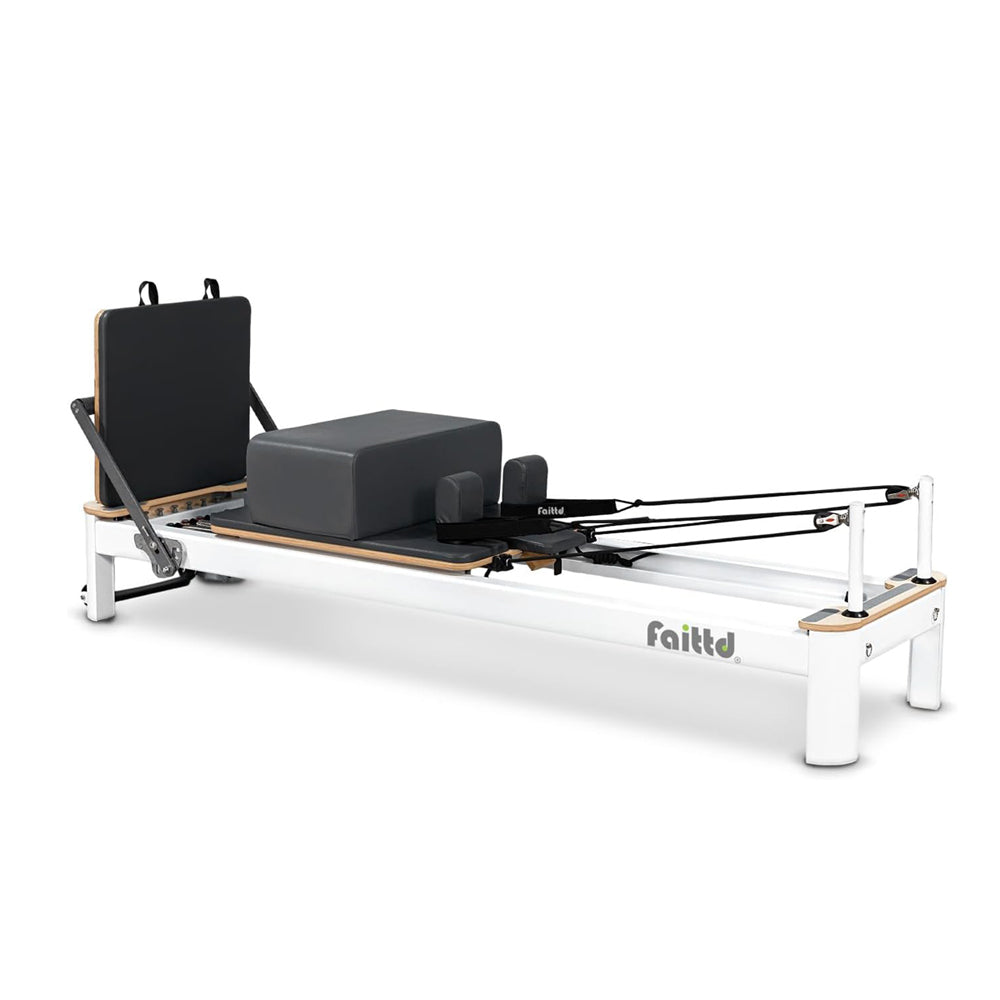Unlock Your Core: Discover the Transformative Moves on a Pilates Reformer!
Pilates is more than just a workout; it's a holistic approach to fitness that emphasizes the mind-body connection, focusing on core strength, flexibility, and overall body awareness. The Pilates reformer, a unique piece of equipment, enhances this experience by providing resistance and support, allowing practitioners to perform a variety of exercises with precision. In this article, we will explore different exercises that can be performed on a Pilates reformer, highlighting their transformative potential for strengthening the core. Proper technique is essential to maximize benefits and minimize the risk of injury, so let’s delve into the world of reformer exercises and unlock your core's full potential!

Understanding the Pilates Reformer
The Pilates reformer is a versatile piece of equipment that consists of a sliding platform, springs for resistance, and adjustable straps. Unlike mat Pilates, which relies solely on body weight and gravity, the reformer allows for greater control and a wider range of motion. This added resistance helps to engage the core muscles more deeply and effectively. One of the main advantages of using the reformer for core strength training is its ability to accommodate all fitness levels. Whether you are a beginner or an experienced practitioner, the reformer can be adjusted to suit your individual needs, making it an excellent tool for building core strength and stability.
Essential Pilates Reformer Exercises for Core Strength
Let's dive into some of the key exercises that target the core using the Pilates reformer. Each of these movements is designed to strengthen your core while also improving flexibility and overall body control.
The Hundred
The Hundred is a classic Pilates exercise that effectively engages the core. To perform it, lie on your back on the reformer with your feet in the foot straps. Lift your head, neck, and shoulders off the carriage, drawing your navel towards your spine. Pump your arms up and down at your sides while inhaling for five counts and exhaling for five counts, repeating for a total of 100 beats. This exercise not only strengthens the core but also enhances circulation and warms up the body. Common mistakes include arching the back or letting the neck strain, so focus on maintaining a neutral spine and engaging your abdominals throughout.
Footwork
Footwork is an essential exercise that lays the foundation for many other reformer movements. To perform footwork, lie on your back on the reformer and place your feet on the footbar. Start with your feet shoulder-width apart and press the carriage away while engaging your core. Focus on controlling the movement as you return to the starting position. This exercise builds strength in the legs while also activating the core, helping to stabilize your body for more advanced exercises later. Remember to keep your hips stable and avoid arching your back during this movement.
Short Spine Massage
The Short Spine Massage is a wonderful exercise for spinal alignment and core activation. To begin, lie on your back with your feet in the straps, and pull your knees towards your chest. As you begin, roll your hips off the carriage and lift your legs overhead, allowing your spine to articulate smoothly. Then, roll back down to the starting position. This exercise not only strengthens the core but also promotes flexibility in the spine and improves circulation. It's important to maintain control and avoid rushing through the movement to reap its full benefits.
Plank Variations
Plank variations on the reformer are excellent for targeting the core and enhancing stability. Start in a plank position with your hands on the reformer’s carriage, keeping your body in a straight line from head to heels. You can modify this exercise by placing your knees on the reformer or adding movement, such as bringing one knee towards your chest. Plank exercises are fantastic for building endurance in the core muscles and improving overall body strength. Ensure that you keep your shoulders over your wrists and engage your core throughout the exercise to avoid sagging or arching your back.
Teaser
The Teaser is often considered one of the most challenging Pilates exercises, but it offers tremendous benefits for overall core strength. To perform the Teaser on the reformer, start by lying on your back with your legs extended and feet in the straps. Engage your core as you roll your spine up, reaching your arms towards your feet and lifting your legs to a V position. Hold for a moment before rolling back down with control. This exercise not only strengthens the core but also improves coordination and balance. It's crucial to maintain a strong core throughout the movement and avoid using momentum to achieve the lift.
Enhancing Core Strength with Reformer Exercises
In summary, incorporating Pilates reformer exercises into your fitness routine can significantly enhance your core strength and overall stability. From foundational movements like Footwork to challenging exercises like the Teaser, each movement offers unique benefits that contribute to a stronger, healthier body. As you explore these exercises, remember to focus on proper technique and consider seeking guidance from a qualified instructor to ensure you're maximizing your results. Embrace the transformative power of Pilates reformer exercises, and unlock your core's potential today!



